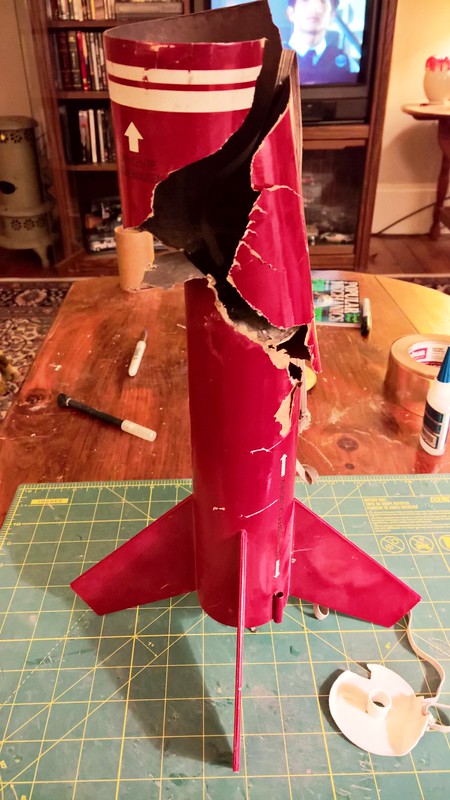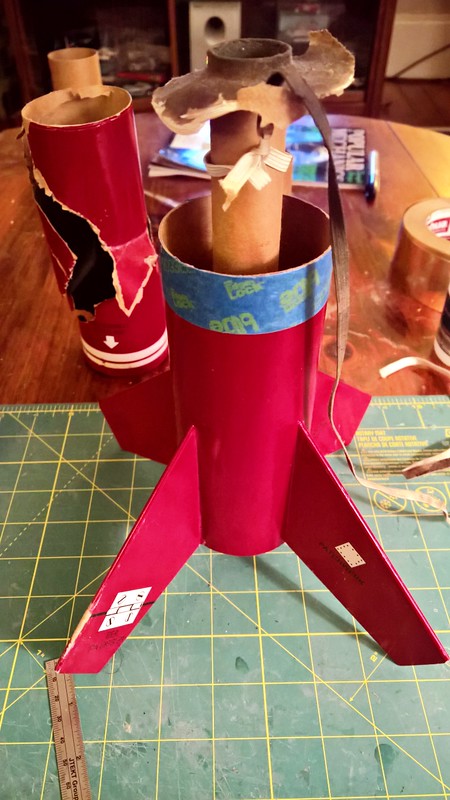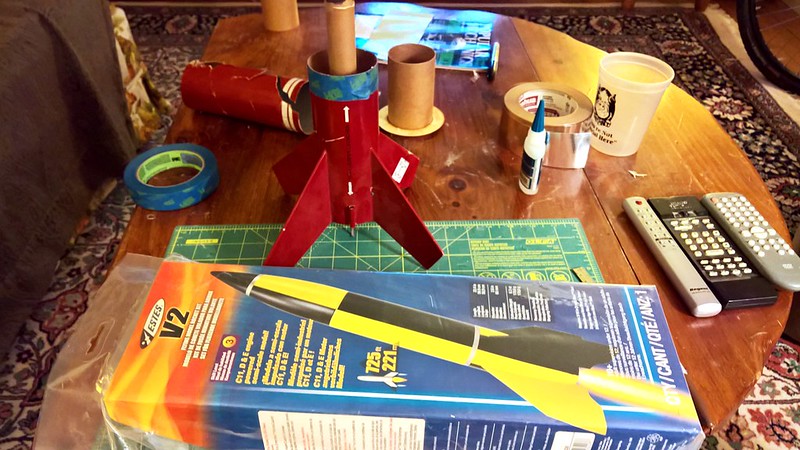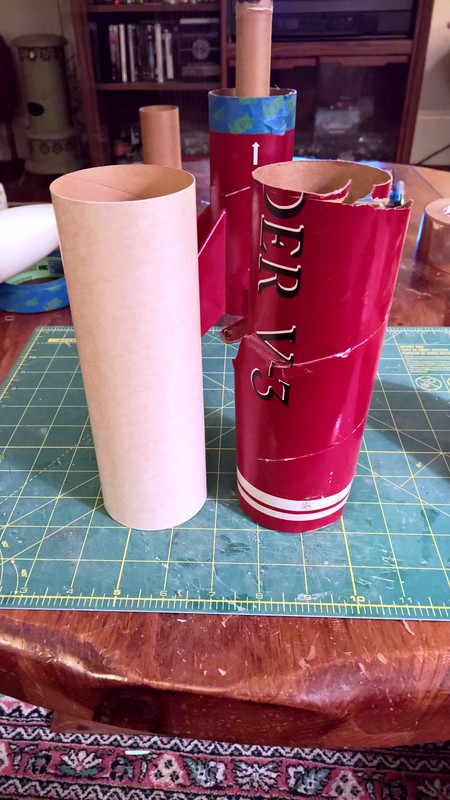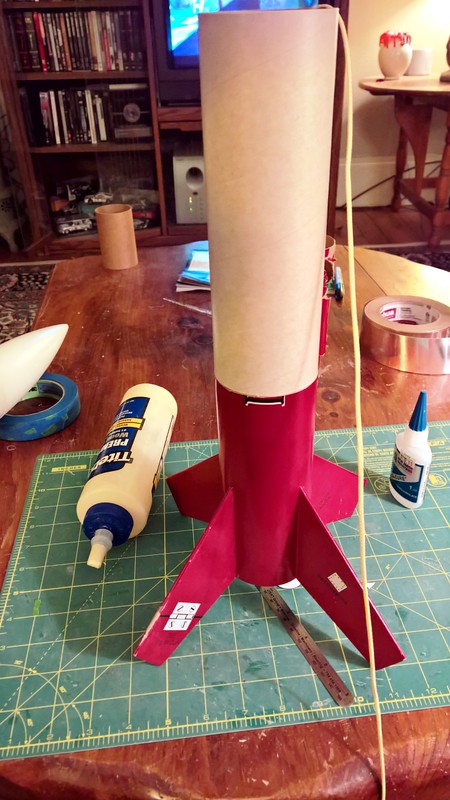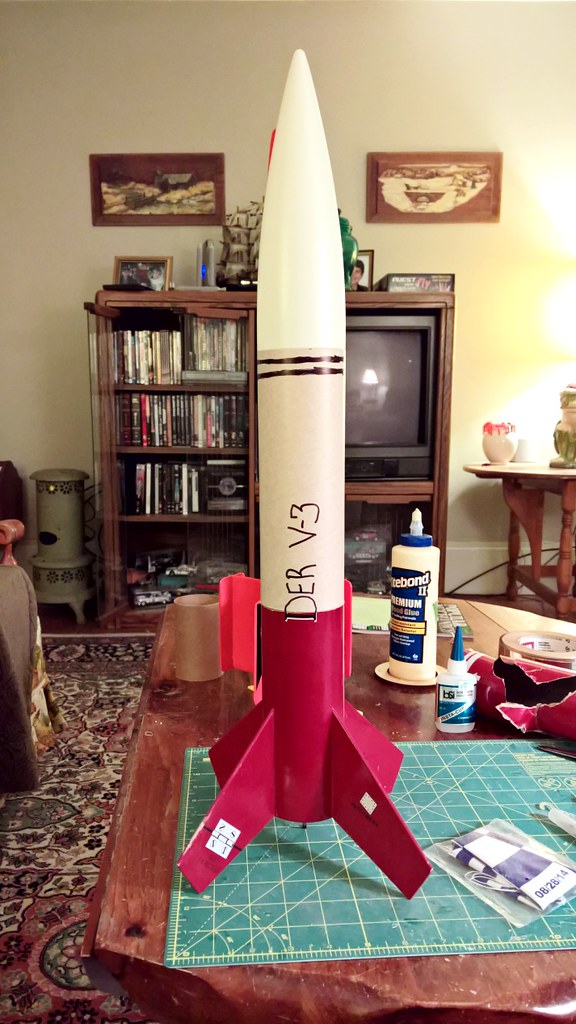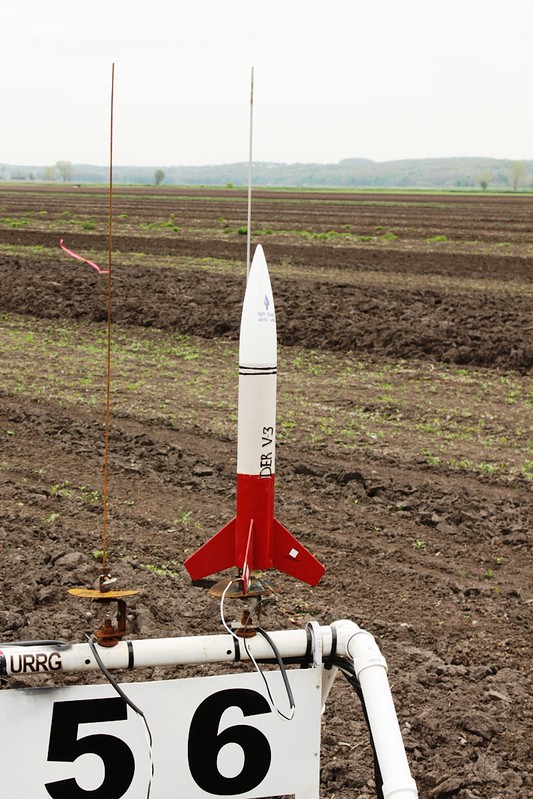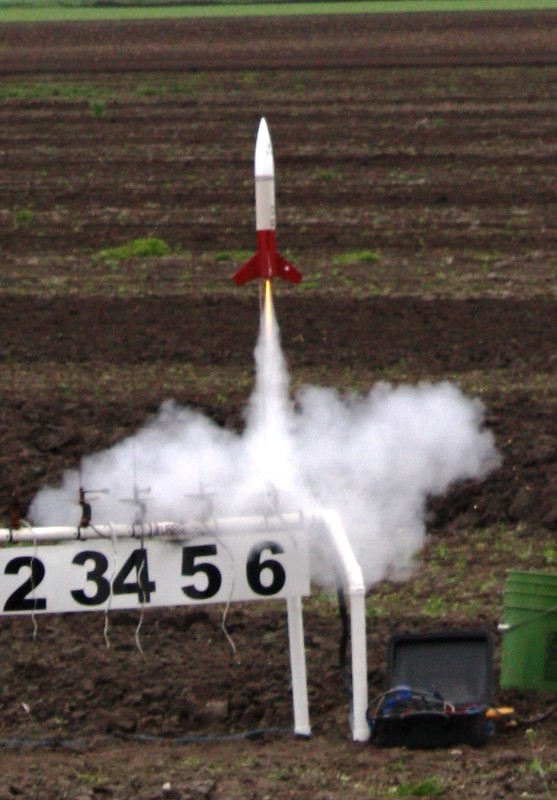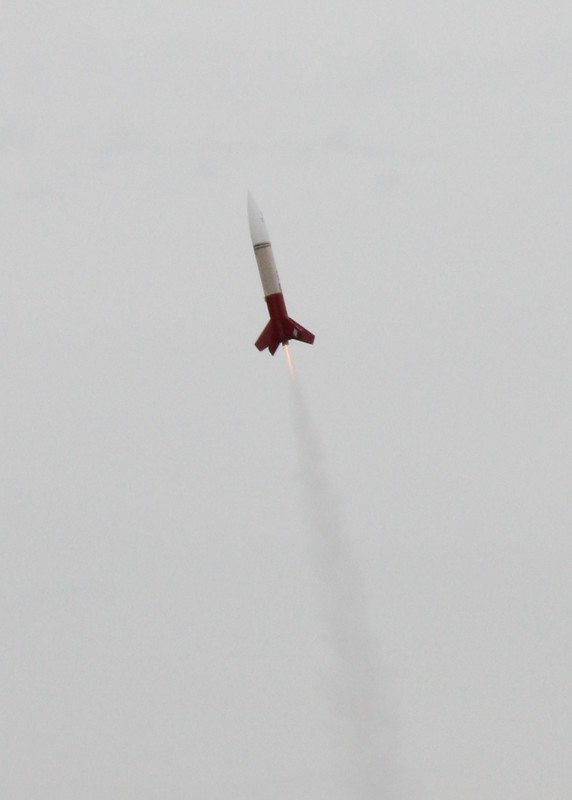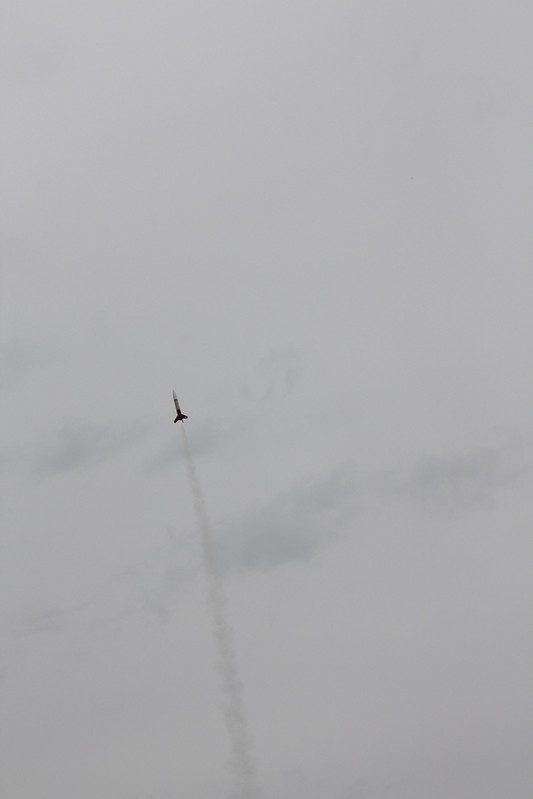EXPjawa
Well-Known Member
Perhaps 13 is unlucky. Friday the 13th, Apollo 13, etc. Yesterday, I made my 13th flight of my Estes Der V-3 clone. Up to this point, I've always flown it on C11 or D12 motors, but yesterday, due to fairly low winds and having a shiny new Chute Release on hand, I decided to kick it up a notch and fly it on an E12-6. The up part was great. It scooted off the pad and got really small in a hurry. Rocksim says it should've hit about 950', but I didn't put the altimeter on it, since the model has (had) no vent holes.
Anyway, it arcs over, starts heading back and I made a mental note that maybe 6 seconds was too long. But it just kept coming down ballistic; the nose cone never separated. As Arthur Dent once said, "it isn't a question of who's habit it is, its a question of how hard you hit it". It hit it hard enough to do this:
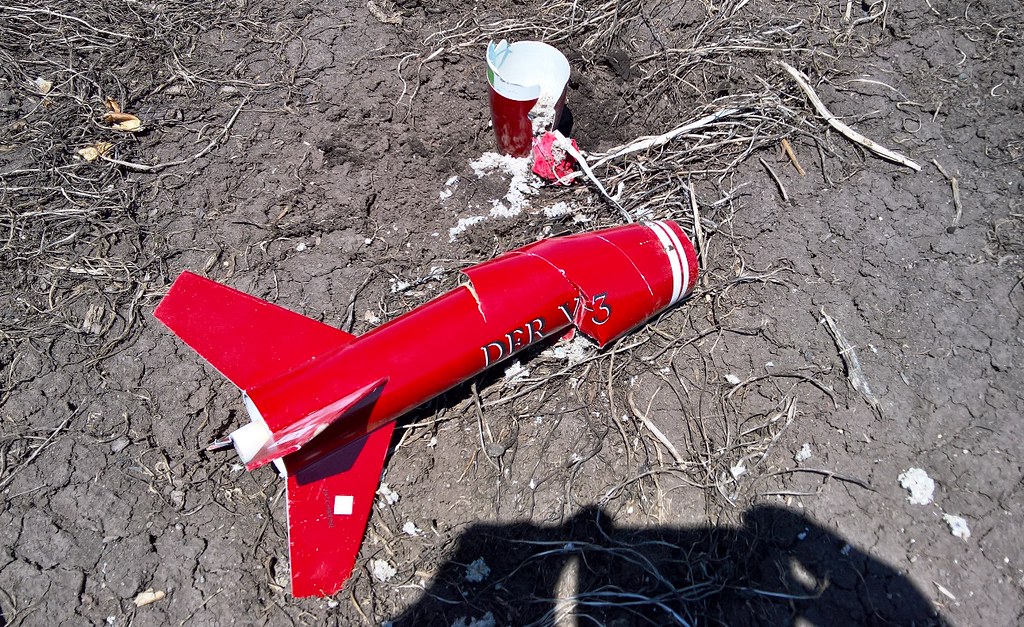
The nose cone split into a few pieces, the forward tube unwound and split open. OTOH, the lower 50% and fin can are fairly intact. I may be able to cut off the upper tube and graft on new piece with a coupler. I'll have to muck about with the motor mount to do it, as the upper ring in above the blow-out line. Maybe I ought to kit bash it together with my old Phoenix, which had the rear tube & fin can fail.
Anyway, here's what I'm wondering: if the cone wasn't tight (it rotated/slid readily after packing), what would prevent separation? The only thing I did different this time was add the CR. If the delay was too long, is possible that the ejection charge wasn't strong enough and aerodynamic forces kept the cone on? My understanding is that Estes ejection charges are pretty damn strong. I pulled the motor afterward, and it does appear that the charge worked, it didn't fail. Could the burst tube be from the charge and not the crash? I'll have to get a picture of the other side of it, this (obviously) shows the rocket as I found it. But at least I didn't have to walk far...
Anyway, it arcs over, starts heading back and I made a mental note that maybe 6 seconds was too long. But it just kept coming down ballistic; the nose cone never separated. As Arthur Dent once said, "it isn't a question of who's habit it is, its a question of how hard you hit it". It hit it hard enough to do this:

The nose cone split into a few pieces, the forward tube unwound and split open. OTOH, the lower 50% and fin can are fairly intact. I may be able to cut off the upper tube and graft on new piece with a coupler. I'll have to muck about with the motor mount to do it, as the upper ring in above the blow-out line. Maybe I ought to kit bash it together with my old Phoenix, which had the rear tube & fin can fail.
Anyway, here's what I'm wondering: if the cone wasn't tight (it rotated/slid readily after packing), what would prevent separation? The only thing I did different this time was add the CR. If the delay was too long, is possible that the ejection charge wasn't strong enough and aerodynamic forces kept the cone on? My understanding is that Estes ejection charges are pretty damn strong. I pulled the motor afterward, and it does appear that the charge worked, it didn't fail. Could the burst tube be from the charge and not the crash? I'll have to get a picture of the other side of it, this (obviously) shows the rocket as I found it. But at least I didn't have to walk far...





